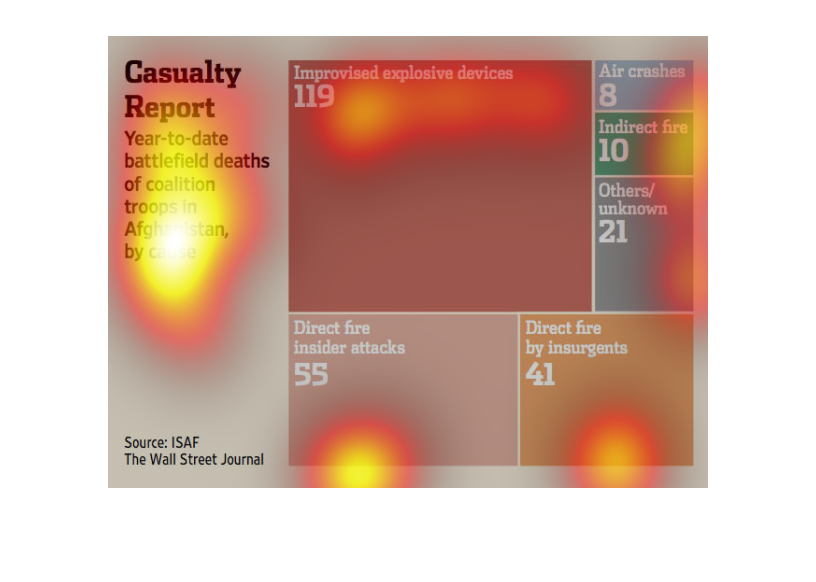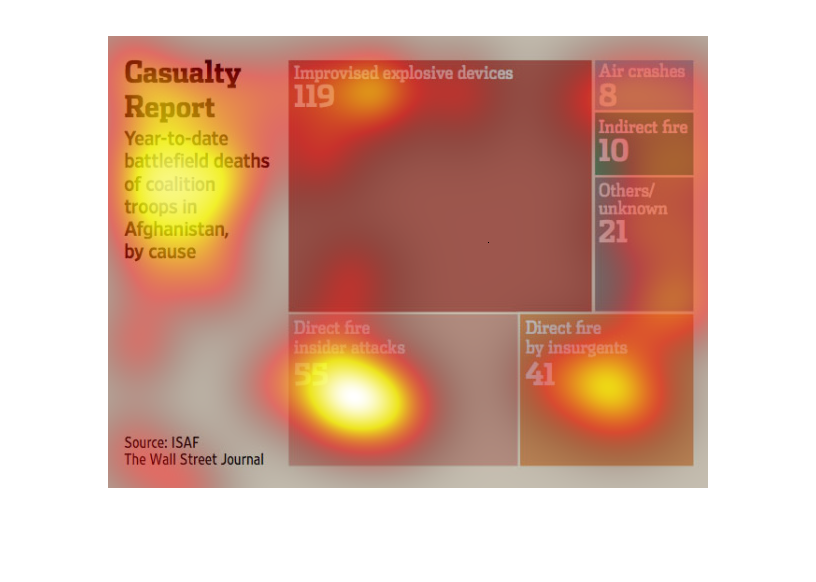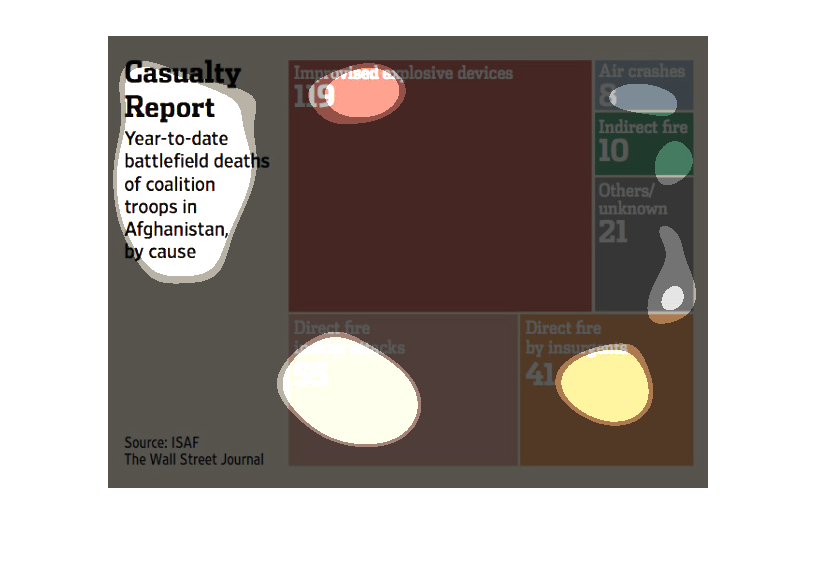
This chart describes about Year-to-date battlefield deaths of coalition troops in Afghanistan,
by cause. Improved explosive devices are the main cause for many deaths.


The figure presented is titled Casualty report: year to date battlefield deaths of coalition
troops in Afghanistan. The figure shows data for year to date deaths.


This is a battlefield casualty report for coalition forces in Afghanistan by cause. The largest
number of casualties comes from IEDs (119), while those suffering casualties from direct fire
from insiders is roughly half that amount, but combined with direct attacks from insurgents
is about the same as those from IEDs.


This infographic is a casualty chart of the troops in afghanistan, broken down into causes.
Each cause is listed in a color square, with the number affected, and each is sized relative
to said number.


This chart describes casualty report. Specifically, year to date battlefield deaths of coalition
troops in Afghanistan, by cause. Different categories are represented by different colors.


This chart describes casualty report year to year date battlefield deaths of coalition troops
in Afghanistan, by cause. Different categories on the chart are represented by different
colors.


casualty report, year to date battlefield deaths of coalition troops in afghanistan by cause.
A weird interpretation of a pie graph in squares. Improvised explosive devices being the top
at 119, followed by direct fire by insiders at 55, direct fire by insurgents at 41, followed
by unknown and indirect at fairly small numbers


The image depicts the causality report, year-to-date, of coalition troops in Afghanistan,
by cause. Improvised explosives are the main cause of death for coalition troops, while air
crashes are the least likely to cause death for coalition troops. Six different causes are
listen. Source is ISAF, The Wallstreet Journal.


This report shows the year to date casualty of battlefield deaths of coalition troops in Afghanistan
by cause. The largest cause of death is by improvised explosive devices at 119 and the lowest
at 8 by air crashes.


This chart shows the battlefield deaths in Afghanistan by cause. The largest causes of death
cam from IEDs, next was direct fire by insurgent attack, third was direct fire from insurgents.
Source: Wall Street Journal.


This graph depicts the casualty report, year to date of battlefield deaths in Afghanistan,
sorted by cause. There were 119 deaths by improvised explosive devices, 55 by direct fire
insider attacks, 41 by direct fire from insurgents, 10 by indirect fire, 8 from air crashes,
and 21 other/ unknown deaths.


This is a chart on the number of deaths caused in Afghanistan by different means. Troops
were killed by explosive devises, air crashes, direct fire, and direct fire insider attacks.
This was published in the Wall Street Journal


It shows a report of casualties of the coalition forces troops in Afganistan divides by cause.
The main cause is improvised exploding devices with a number of 119, the second is direct
fire by insider with 55 casualties, third is fire from insurgents with 41, and then less cases
from air crashes, indirect fire and other causes


Casualty report, year to date battlefield deaths of coalition troops in Afghanistan by cause.
We see the data represented in a square adaption of a pie chart. Improvised explosive devices
being the majority at 119, direct fire insider attacks at 55, direct fire by insurgents at
41, unknown at 21, indirect at 10, air crash at 8.


This image shows the total number of deaths of coalition forces in the nation of Afghanistan.
It is broken up into categories and gives total number per category.
































